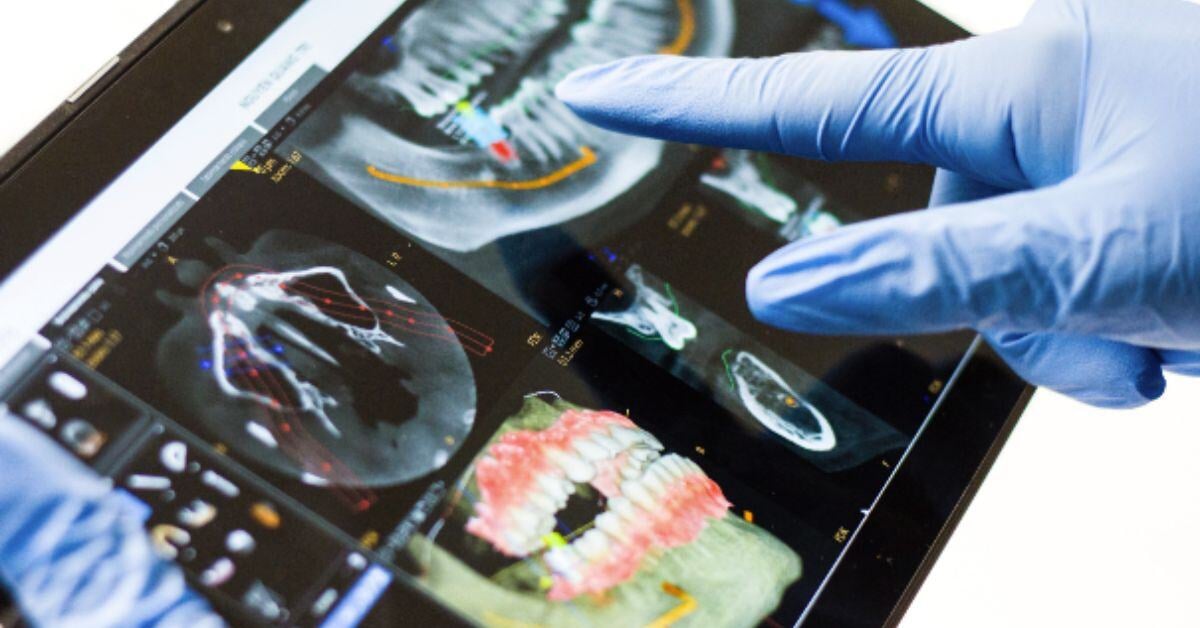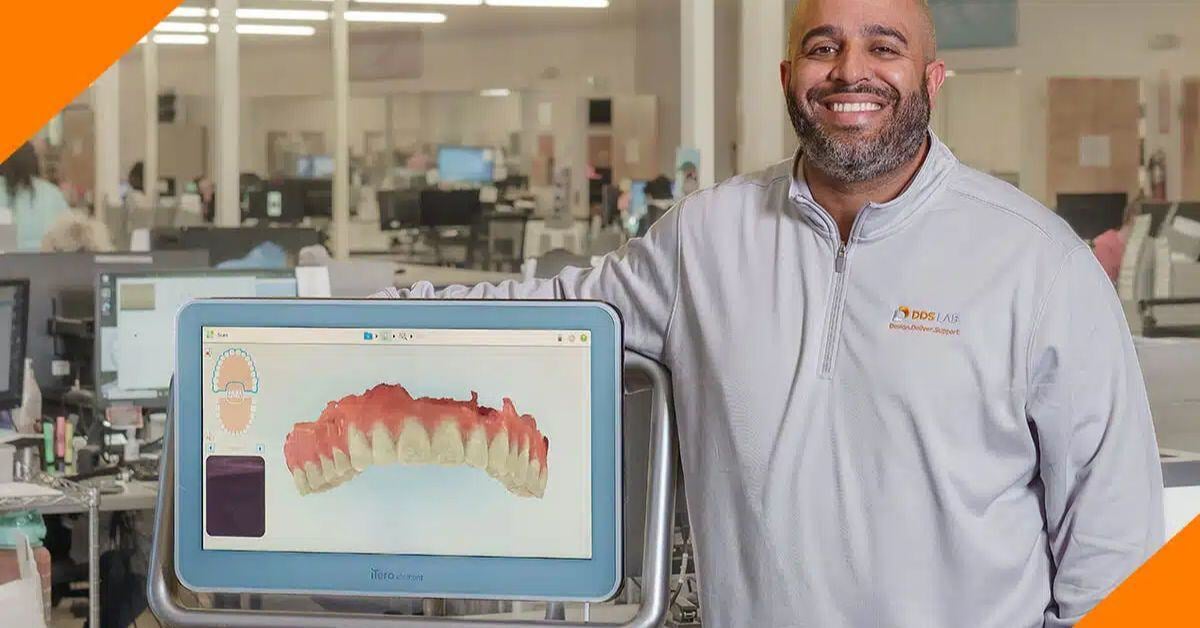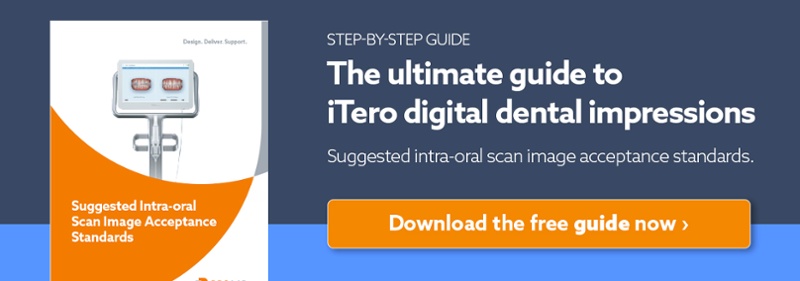Dentistry has come a long way since its beginnings. Gone are the days of taking physical impressions and sending cases out to labs via snail mail. With innovative technology, dental practices now have the opportunity to go digital and reap numerous benefits.
Digital technology can help dentists streamline operations, attract more patients, and provide better care for current patients. One of the most influential types of digital technology in the dental industry is the intraoral scanner, which allows for precise digital impressions of patients' teeth and gums. This guide explores how intraoral scanning can help take dental practices and laboratories digital while highlighting how DDS Lab supports this transition.
What's an Intraoral Scanner?
An intraoral scanner is a digital device dentists can use to capture 3D images of a patient's teeth and gums. It works by using advanced imaging technology to create a virtual model of the patient's mouth. To use it, the dentist takes the scanner's wand and moves it around inside the patient's mouth, capturing images as they go. Dentists can use the resulting digital model to plan and execute restorative or orthodontic treatments.
Adopting Intraoral Scanners: From the Dental Office Perspective
Dental offices should consider adopting intraoral scanning because this technology offers a plethora of benefits.
1. Enhanced Patient Experience
Intraoral scanning eliminates the discomfort associated with traditional impression materials. Traditional impressions often require patients to hold uncomfortable trays filled with goo in their mouths for several minutes. With intraoral scanning, the dentist uses a small handheld wand to capture digital images of the teeth and gums. This process is quick, comfortable, and efficient. Patients often appreciate the speed and accuracy of digital scans, leading to a more positive experience in the chair.
2. Improved Accuracy
Errors are common with conventional impressions. For example, a patient may move slightly during the impression process, causing inaccuracies that require redoing the entire process. Additionally, the impression material may not set correctly, resulting in an unusable mold. Intraoral scanning takes away these concerns by providing precise digital impressions. Scanner accuracy results in better-fitting restorations and a decreased need for remakes.
3. Streamlined Workflow
Intraoral scanners can directly send digital impressions to the laboratory. Instead of waiting for traditional impressions to arrive in the mail, labs can instantly receive digital scans. This helps speed up the production process and allows dentists to provide quicker treatment turnaround times, which can increase practice productivity and revenue and improve patient satisfaction.
4. Better Case Presentation
Dentists can easily visualize digital scans on a computer screen. This helps them explain dental issues and treatment options to patients more clearly. When patients can see digital images of their teeth and gums, they’re more likely to understand the need for treatment and accept it.

Adopting Intraoral Scanners: From the Laboratory Perspective
Your practice isn't the only one that can benefit from intraoral scanning. When practices adopt intraoral scanning, their partner laboratories also benefit.
1. Precision and Consistency
Labs receive high-quality digital impressions that eliminate common issues with physical impressions, such as distortion or bubbles. This leads to more consistent outcomes in prosthetic fabrication.
2. Integration With CAD/CAM Technology
Intraoral scanning integrates seamlessly with digital design technology. This allows labs to produce precise and accurate prosthetics, such as crowns and bridges, in a shorter amount of time. This can improve efficiency and reduce production costs for the lab.
3. Data Management
Digital files are easier to store, manage, and retrieve than physical impressions. This can help labs keep track of cases and store important patient data for future reference. It also allows for easy sharing of digital files between the lab and the dental office, which can improve communication and collaboration.
4. Collaboration With Dentists
Digital files facilitate real-time communication between dentists and labs, making it easier to discuss adjustments or modifications needed during the fabrication process.

How DDS Lab Helps Practices Go Digital
At DDS Lab, we recognize the challenges dental practices face when transitioning to a digital workflow. Going from physical impressions to digital scans and from traditional fabrication methods to digital fabrication is a big change. Dentists may worry they won't understand how to use the technology or that the learning curve will be too steep.
That's why we offer full support and education to help practices make a smooth transition. We're a trusted lab specializing in digital dental design services. We have extensive experience processing more iTero cases for restorative purposes than anyone else. We're very familiar with intraoral scanning, digital design, and the fabrication process for digital restorations. Partnering with us can help your practice take full advantage of all the benefits that come with going digital.
Our commitment to facilitating this transformation includes comprehensive education and training resources that equip dental teams with the knowledge to effectively use intraoral scanners. We want to help practices feel confident and comfortable with adopting digital technology so that they can experience the many benefits it offers.
We offer solutions that seamlessly integrate with popular scanners. Our digital workflow makes it easy for practices to send us their digital impressions. This helps reduce the learning curve and speeds up adoption of intraoral scanning technology.
Our experienced technicians are always available to assist with any questions or concerns related to digital workflows. Our goal is to make the transition process as smooth as possible for dental practices.
Additionally, by adhering to rigorous quality control measures, DDS Lab guarantees our restorations from digital impressions have the same level of precision, fit, and quality as traditional impressions. We can instill confidence in practices that going digital won't compromise the quality of their restorations and can help them improve patient care.
Don't let your dental practice fall behind in this digital age. Take it digital! By integrating intraoral scanning into your dental practice, you can take a step toward modernizing your operations and improving patient care. Both your office and your partner laboratories can benefit from the enhanced accuracy, efficiency, and patient satisfaction this technology brings.
With DDS Lab as your partner in this transition, you can confidently embrace the digital future and help your practice continue to succeed in the ever-evolving dental industry. Contact us today if you have any questions about how DDS Lab can support your dental office in going digital.
